Complex sex and estrous cycle differences in spontaneous transient adenosine
- PMID: 32040198
- PMCID: PMC7310595
- DOI: 10.1111/jnc.14981
Complex sex and estrous cycle differences in spontaneous transient adenosine
Abstract
Adenosine is a ubiquitous neuromodulator that plays a role in sleep, vasodilation, and immune response and manipulating the adenosine system could be therapeutic for Parkinson's disease or ischemic stroke. Spontaneous transient adenosine release provides rapid neuromodulation; however, little is known about the effect of sex as a biological variable on adenosine signaling and this is vital information for designing therapeutics. Here, we investigate sex differences in spontaneous, transient adenosine release using fast-scan cyclic voltammetry to measure adenosine in vivo in the hippocampus CA1, basolateral amygdala, and prefrontal cortex. The frequency and concentration of transient adenosine release were compared by sex and brain region, and in females, the stage of estrous. Females had larger concentration transients in the hippocampus (0.161 ± 0.003 µM) and the amygdala (0.182 ± 0.006 µM) than males (hippocampus: 0.134 ± 0.003, amygdala: 0.115 ± 0.002 µM), but the males had a higher frequency of events. In the prefrontal cortex, the trends were reversed. Males had higher concentrations (0.189 ± 0.003 µM) than females (0.170 ± 0.002 µM), but females had higher frequencies. Examining stages of the estrous cycle, in the hippocampus, adenosine transients are higher concentration during proestrus and diestrus. In the cortex, adenosine transients were higher in concentration during proestrus, but were lower during all other stages. Thus, sex and estrous cycle differences in spontaneous adenosine are complex, and not completely consistent from region to region. Understanding these complex differences in spontaneous adenosine between the sexes and during different stages of estrous is important for designing effective treatments manipulating adenosine as a neuromodulator.
Keywords: FSCV; adenosine; estrous cycle; fast scan cyclic voltammetry; in vivo; sex differences.
© 2020 International Society for Neurochemistry.
Conflict of interest statement
conflict of interest disclosure
The authors declare no competing financial interests.
Figures
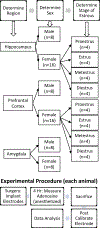
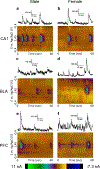

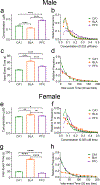

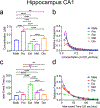
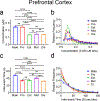
Similar articles
-
Sex and estrous cycle-dependent differences in glial fibrillary acidic protein immunoreactivity in the adult rat hippocampus.Horm Behav. 2009 Jan;55(1):257-63. doi: 10.1016/j.yhbeh.2008.10.016. Epub 2008 Nov 13. Horm Behav. 2009. PMID: 19056393
-
The estrous cycle surpasses sex differences in regulating the transcriptome in the rat medial prefrontal cortex and reveals an underlying role of early growth response 1.Genome Biol. 2015 Dec 2;16:256. doi: 10.1186/s13059-015-0815-x. Genome Biol. 2015. PMID: 26628058 Free PMC article.
-
Sex- and Estrus-Dependent Differences in Rat Basolateral Amygdala.J Neurosci. 2017 Nov 1;37(44):10567-10586. doi: 10.1523/JNEUROSCI.0758-17.2017. Epub 2017 Sep 27. J Neurosci. 2017. PMID: 28954870 Free PMC article.
-
Rat estrous cycle influences the sexual diergism of HPA axis stimulation by nicotine.Brain Res Bull. 2004 Sep 30;64(3):205-13. doi: 10.1016/j.brainresbull.2004.06.011. Brain Res Bull. 2004. PMID: 15464856
-
Female rodents in behavioral neuroscience: Narrative review on the methodological pitfalls.Physiol Behav. 2024 Oct 1;284:114645. doi: 10.1016/j.physbeh.2024.114645. Epub 2024 Jul 22. Physiol Behav. 2024. PMID: 39047942 Review.
Cited by
-
A1 and A2A Receptors Modulate Spontaneous Adenosine but Not Mechanically Stimulated Adenosine in the Caudate.ACS Chem Neurosci. 2020 Oct 21;11(20):3377-3385. doi: 10.1021/acschemneuro.0c00510. Epub 2020 Oct 7. ACS Chem Neurosci. 2020. PMID: 32976713 Free PMC article.
-
A2AR-mediated lymphangiogenesis via VEGFR2 signaling prevents salt-sensitive hypertension.Eur Heart J. 2023 Aug 1;44(29):2730-2742. doi: 10.1093/eurheartj/ehad377. Eur Heart J. 2023. PMID: 37377160 Free PMC article.
-
Structural Similarity Image Analysis for Detection of Adenosine and Dopamine in Fast-Scan Cyclic Voltammetry Color Plots.Anal Chem. 2020 Aug 4;92(15):10485-10494. doi: 10.1021/acs.analchem.0c01214. Epub 2020 Jul 21. Anal Chem. 2020. PMID: 32628450 Free PMC article.
-
Pannexin1 channels regulate mechanically stimulated but not spontaneous adenosine release.Anal Bioanal Chem. 2022 May;414(13):3781-3789. doi: 10.1007/s00216-022-04047-x. Epub 2022 Apr 5. Anal Bioanal Chem. 2022. PMID: 35381855
-
On the basis of sex and sleep: the influence of the estrous cycle and sex on sleep-wake behavior.Front Neurosci. 2024 Aug 29;18:1426189. doi: 10.3389/fnins.2024.1426189. eCollection 2024. Front Neurosci. 2024. PMID: 39268035 Free PMC article. Review.
References
-
- Abel KM, Drake R, Goldstein JM (2010) Sex differences in schizophrenia. Int. Rev. Psychiatry 22, 417–428. - PubMed
-
- Akhondzadeh S, Shasavand E, Jamilian HR, Shabestari O, Kamalipour A (2000) Dipyridamole in the treatment of schizophrenia: Adenosine-dopamine receptor interactions. J. Clin. Pharm. Ther 25, 131–137. - PubMed
-
- Barker JM, Galea LAM, Eb D- (2009) General and Comparative Endocrinology Sex and regional differences in estradiol content in the prefrontal cortex, amygdala and hippocampus of adult male and female rats. Gen. Comp. Endocrinol 164, 77–84. - PubMed
Publication types
MeSH terms
Substances
Grants and funding
LinkOut - more resources
Full Text Sources
Miscellaneous

